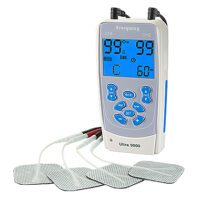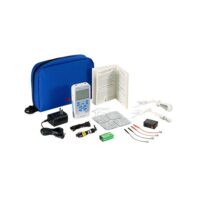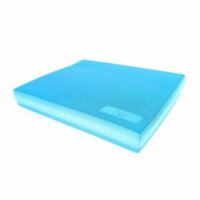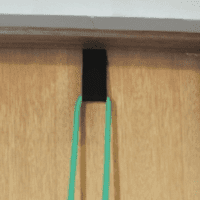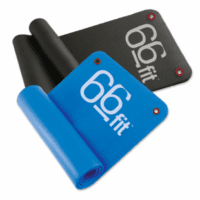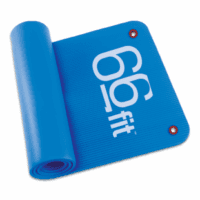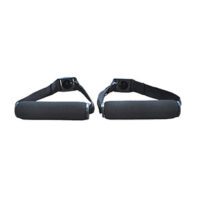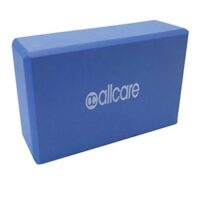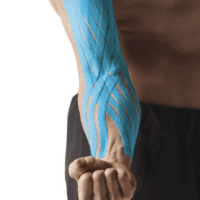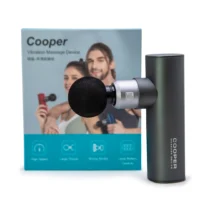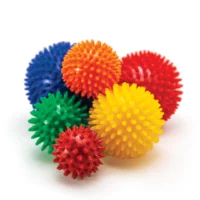Kids Leg Pain
Article by John Miller


Kids Leg Pain
Navigating Common Youth Leg Injuries
Introduction
As a physiotherapist, addressing kids’ leg pain is a significant part of my practice. Understanding why these injuries differ from those in adults is essential for effective treatment. This article discusses the common causes of leg pain in children and offers guidance on managing these issues.
Why Kids’ Leg Pain is Unique
Children’s bones are still growing, making them more susceptible to certain types of injuries. The growth plates, or physis, are particularly vulnerable and can be the source of significant pain and discomfort.
Recent Research
Emerging studies highlight the importance of specialised approaches in treating growth plate injuries in children to prevent long-term issues.
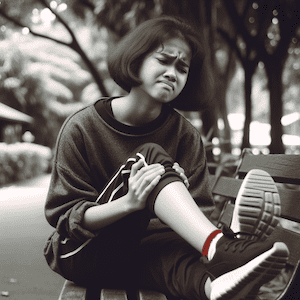
Common Causes of Kids’ Leg Pain
Osgood-Schlatter’s Disease
This condition, often causing a painful lump below the knee, is a common source of leg pain in active children. Reducing activity levels and physiotherapy are key to treatment.
Related Article: Osgood-Schlatter’s Disease
Sinding-Larsen-Johansson Disease
Similar to Osgood-Schlatter’s, this disease causes pain at the lower knee cap and is also related to overuse. Rest and physiotherapy are effective treatments.
Related Article: Sinding Larsen Johansson Syndrome
Anterior Knee Pain
Frequently mislabelled as growing pains, this syndrome can cause significant leg pain in children. Proper diagnosis and physiotherapeutic intervention are crucial.
Related Articles:
Ligament Injuries
As children’s bones mature, they become more prone to ligament injuries like ACL and MCL tears, contributing to leg pain. Conservative treatment is often effective.
Read more:
Sever’s Disease
A common source of heel pain in young athletes, this condition responds well to reduced activity and physiotherapy.
Read more: Severs Disease
Ankle Sprains
Often resulting in leg pain, ankle sprains are common in young sports enthusiasts. Proper rehabilitation is key to recovery.
Read more: Ankle Sprains
Growth Plate Fractures
These fractures can cause severe leg pain and need careful management, sometimes including surgery.
Avulsion Fractures
Occurring when a piece of bone is pulled away from the main bone, these injuries can lead to significant leg pain. Treatment usually includes rest and physiotherapy.
Read More: Avulsion Fractures
Growing Pains
Growing pains, often mistaken for more serious conditions, are a common source of leg discomfort in children. Typically experienced as a throbbing pain in the legs at night, they are not actually related to physical growth. The exact cause is unclear, but overuse and postural imbalances may contribute.
Usually, these pains are harmless and can be managed with gentle stretching and hydration. However, if the pain is persistent or severe, it’s important to consult a physiotherapist or doctor to rule out other issues. Regular checks can ensure your child’s comfort and health.
Related Article: Growing Pains.
What to Do for Kids’ Leg Pain?
If your child is experiencing leg pain, it’s crucial to seek the advice of a physiotherapist. They will provide a thorough assessment and a tailored treatment plan to address the specific cause of the pain.
Conclusion
Properly understanding and treating leg pain in children is vital for their health and well-being. Early and appropriate physiotherapeutic intervention can ensure effective recovery and prevent future complications. Accurate diagnosis is the key to short and long-term solutions.
For more information and professional advice, please consult your physiotherapist or visit a doctor.
Related Articles
- Osgood-Schlatter Disease – Readers will learn about the symptoms, causes, and treatment options for this common knee condition in growing children.
- Sever’s Disease – This page provides information on the causes, symptoms, and effective treatments for heel pain in young athletes.
- Ankle Sprains – Offers guidance on the rehabilitation of ankle sprains, focusing on recovery steps and prevention tips for young sports enthusiasts.
- Patellofemoral Pain Syndrome – Explains this knee pain condition, its causes, symptoms, and treatment methods, including physiotherapy approaches.
- Growing Pains in Children – Discusses the characteristics of growing pains, debunking myths, and offering practical advice for parents to help their children.
- Juvenile Osteochondritis Dissecans – This article could give readers an understanding of a less common but significant condition that affects the joints of children and adolescents.
- Kids Sports Injuries – Offers a broad overview of common sports-related injuries in children, emphasizing prevention and proper treatment.
- Chondromalacia Patella – Provides information on this condition related to the deterioration of the cartilage under the kneecap, including symptoms and treatment options.
- Patellar Tendinopathy (Jumper’s Knee) – Focuses on this specific injury, its causes, symptoms, and physiotherapy treatments.
- Sinding-Larsen-Johansson Disease – This page delves into a condition causing pain at the lower part of the kneecap, common in young athletes. Readers will discover the symptoms, causes, and effective physiotherapy treatments tailored for this overuse injury, helping to manage pain and promote recovery.
- Youth ACL Injuries – Visitors will find comprehensive information on ACL injuries specific to young athletes, including how these injuries occur, signs to watch for, and the latest treatment options. The article emphasises the importance of early diagnosis and specialised rehabilitation strategies to support a safe return to sports.
- Avulsion Fractures – This article explains avulsion fractures, where a piece of bone is pulled off by a tendon or ligament, often occurring in active children and adolescents. It covers the common sites for these injuries, how they are diagnosed, treatment methods, and tips for prevention. Readers will learn about the recovery process and how physiotherapy can aid in healing and strengthening the affected area.
- Kids Spinal Pain – This resource provides an in-depth look at spinal pain in children, covering common causes ranging from poor posture to more serious conditions like scoliosis. It offers insights into symptoms that parents should be aware of, effective prevention strategies, and the role of physiotherapy in treating and managing spinal pain. The article stresses the importance of early intervention and tailored treatment plans to ensure the well-being and healthy development of children experiencing spinal issues.
Article by John Miller
Youth Leg Injuries: Understanding & Treatment Options
Introduction
Welcome to PhysioWorks' detailed FAQ on Youth Leg Injuries, a resource specifically designed to shed light on leg-related conditions in young individuals. Whether it's sports injuries, overuse conditions, or growth-related issues, our guide covers a wide spectrum of leg injuries that are prevalent among the youth. Each subsection below not only provides insights but also directs you to comprehensive articles for an in-depth understanding, ensuring you're well-informed about these conditions.
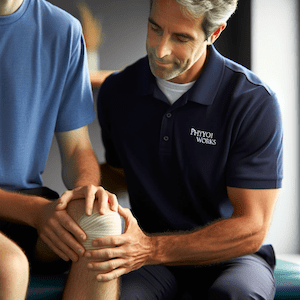

Youth Leg Injuries
Young individuals are prone to a variety of leg injuries, each requiring specific attention and care. Our articles focus on identifying symptoms, providing effective treatment options, and offering rehabilitation strategies. Understanding these injuries is vital for a speedy recovery and preventing future complications.
- Osgood Schlatter’s Disease
- Sinding Larsen Johansson Syndrome
- Patellofemoral Pain Syndrome
- Knee Ligament Injuries
- ACL Injury
- Meniscus Tear
- Sever’s Disease
Continue exploring Youth Leg Injuries...
Pelvis & Hip Injuries
Injuries to the pelvis and hip can significantly impact a young person's mobility and sports participation. These articles discuss into various common conditions, their symptoms, and how to manage them effectively.
Discover more about Pelvis & Hip Injuries...
Knee Injuries
The knee, a complex joint, is susceptible to various injuries, particularly in active youths. These resources are tailored to provide information on prevention, diagnosis, and effective treatment for knee injuries.
- Discoid Meniscus
- Osteochondritis Dissecans
- Patella Dislocation
- Osgood Schlatter’s Disease
- Sinding Larsen Johansson Syndrome
- Patellofemoral Pain Syndrome
Read more about Knee Injuries...
Heel & Ankle Injuries
Heel and ankle injuries are common but manageable conditions in youth sports. Our articles cover a range of topics from immediate care to long-term rehabilitation strategies.
Learn more about Heel & Ankle Injuries...
Common Youth & Teenager Sports Injuries
Engaging in sports is beneficial for youths, but it also comes with the risk of injuries. Our resources provide insights into common sports injuries, preventive measures, and effective treatment protocols.
Explore Sports Injuries in Youths...
Conclusion
Understanding and effectively managing youth leg injuries are crucial for their wellbeing and continued active participation in sports and daily activities. This guide, with its extensive resources, aims to equip parents, coaches, and young athletes with the knowledge to handle these injuries confidently. Stay informed and proactive in caring for youth leg health.
Related Articles
- Avulsion Fracture Recovery: A Physio's Guide - Offers insights into the recovery process for avulsion fractures, a common injury among active youth.
- Osteochondritis Dissecans - Discusses a condition where bone underneath the cartilage of a joint dies due to lack of blood flow, relevant for youth experiencing knee issues.
- Effective Management Of Kids Sports Injuries - Provides a comprehensive guide on handling sports injuries in children, including prevention and treatment strategies.
- Leg Pain - Covers various conditions leading to leg pain and outlines effective treatment strategies, highlighting the role of physiotherapy in pain reduction and mobility improvement.
- Ankle Strapping: Complete Guide To Injury Prevention - Discusses the benefits of ankle strapping as a preventative measure against injuries, focusing on techniques and materials.
- Sinding-Larsen-Johansson Syndrome: Effective Management And Treatment Options - Offers detailed advice on managing conditions leading to SLJ kneecap pain and outlines effective treatment strategies.
- Sever's Disease Explained: Causes, Symptoms, Treatment - Provides an overview of Sever's disease, including common causes, treatment options, and related conditions like plantar fasciopathy and Achilles tendinopathy.
- Osgood Schlatter Disease - Offers insights into the causes, symptoms, and treatment of Osgood-Schlatter disease, a condition causing knee pain.









